Thought Leaders
Faculty members explore the ways we engage with the world through perception, imagination, and communication

“The world as we have created it
is a process of our thinking.
It cannot be changed without changing our thinking.”
― Albert Einstein
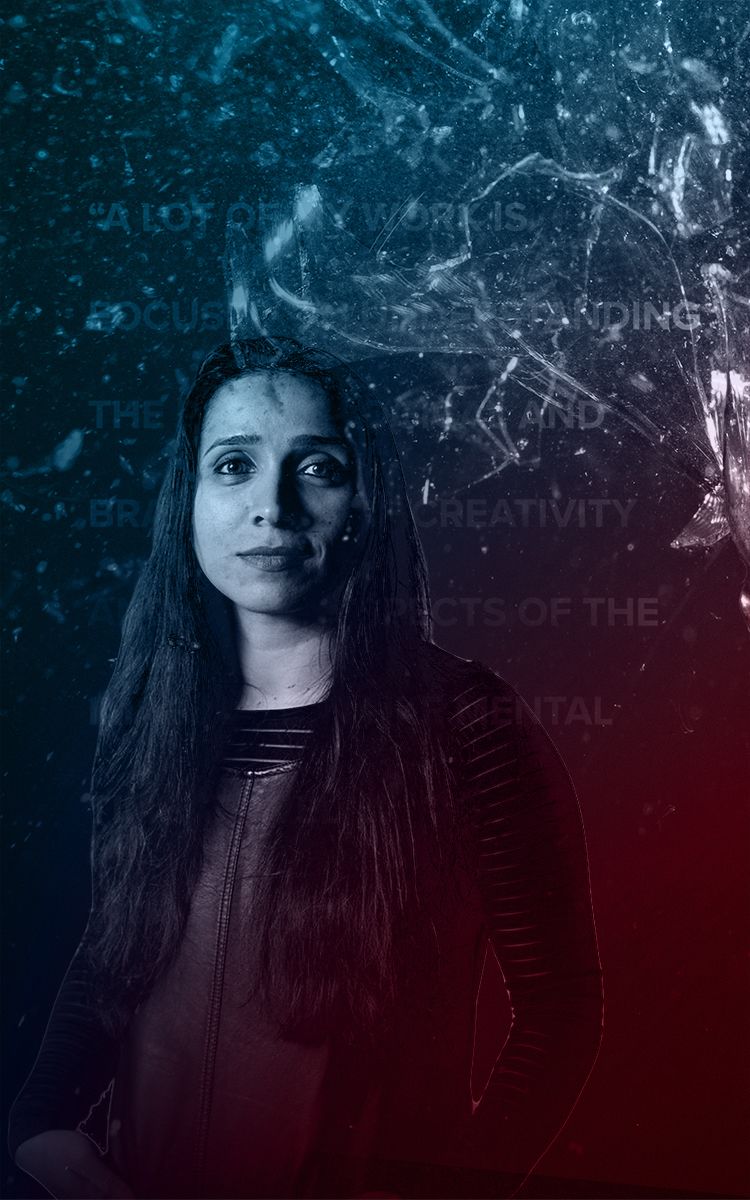
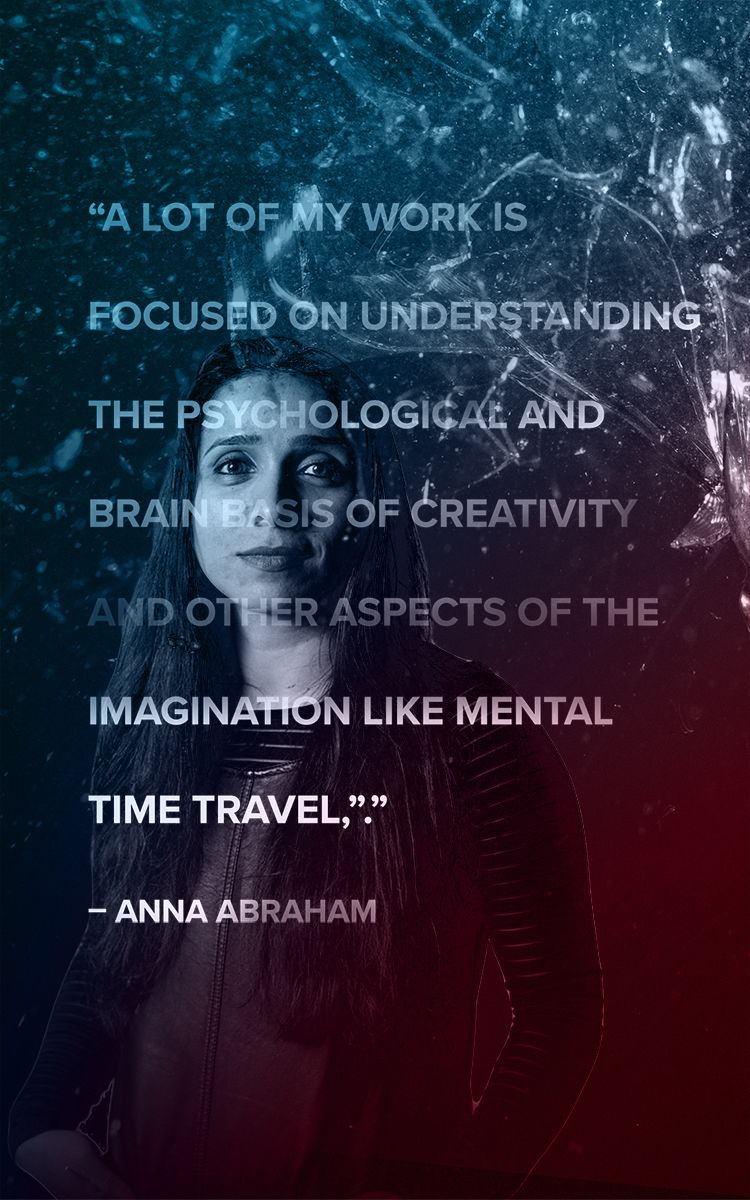

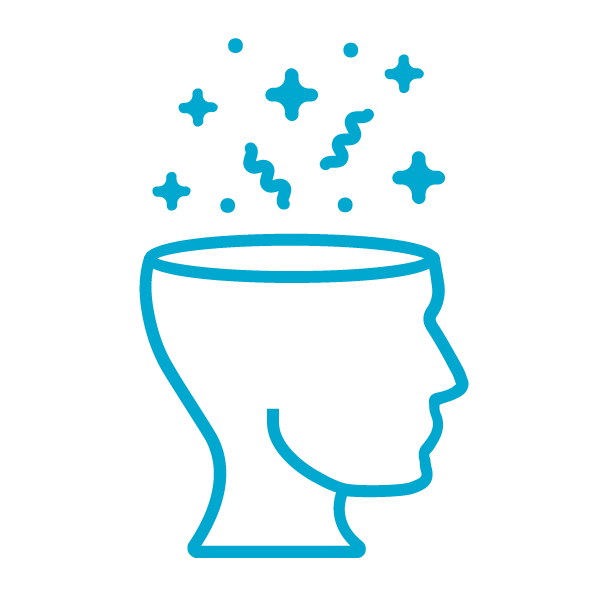
Imagining New Possibilities
Anna Abraham brings nearly two decades of creativity research to the Torrance Center
By Kathryn Kao
What is self and what is other?
What separates our imagination from reality and how can we shift between the two without losing sight of what’s real?
Anna Abraham is on a quest to answer these complex questions with her research on creativity and the human imagination. As the new director of the Torrance Center for Creativity and Talent Development in the UGA Mary Frances Early College of Education, Abraham brings with her nearly two decades of experience assessing and exploring the creative mind.
“A lot of my work is focused on understanding the psychological and brain basis of creativity and other aspects of the imagination like mental time travel,” says Abraham, the E. Paul Torrance Professor of Creativity and Gifted Education. “The question of what's happening, for instance, in your brain when you're thinking back to your own past compared to when you're thinking about a possible future for yourself.”
Originally from India, Abraham received her master’s degree in psychology from the University of Essex in the United Kingdom and her doctoral degree in neuroscience from Ruhr University Bochum in Germany.
Since then, she has written one book, edited two books, authored over 40 articles and book chapters, received grants to conduct her research, and taught in three countries: Kuwait, Germany, and the U.K., delivering courses to undergraduate and graduate students with majors ranging from psychology and medicine to business and engineering. Most recently, Abraham served as a psychology professor in Leeds Beckett University’s School of Social Sciences in the U.K., where she was also director of the Centre for Psychological Research.
Abraham finds one strategy particularly useful when teaching psychology to students from a variety of disciplines. To heighten their interest in the subject, she often starts each lesson with a topic that will most likely resonate with that particular student cohort based on their educational backgrounds and degree ambitions. For example, when teaching medical students, Abraham often starts with the placebo effect, an ideal teaching context in which they learn the impact of psychological factors on the healing process.
“The onus is on the teacher to explain why this subject is important to them,” she says. “I think for any subject—whether you're teaching a future psychologist, teacher, or doctor—a good way to connect with students is to pick a theme that makes them think about the relevance of the subject you’re teaching because people have to understand why what they're learning is important. They get very excited about what they’re studying if they grasp the relevance and importance of what they're doing. An interdisciplinary focus allows for the discovery of wonderful cross-connections.”
Abraham’s passion for psychology began in high school and solidified while she was pursuing her undergraduate degree in the subject area at the University of Delhi in India. As a graduate student, her interests broadened beyond psychology into different aspects of the field that were less prevalent in her school’s curricula, such as imagination and creativity.
She is particularly interested in the way our brains distinguish reality from fiction, which she studies using functional magnetic resonance imaging (fMRI) to observe and assess brain activity as participants process a hypothetical scenario involving either a real person or a fictional character.
“When people were making an estimation of whether something is real or not, what we found was that the context didn't make much of a difference in terms of differentiating brain activity responses,” says Abraham. “What did matter, generally, was that when people process any scenario with a real entity, a different network of regions was activated compared to when they were processing a fictional character. Somewhat counterintuitively, fiction is processed as fact whereas reality is processed in a self-based manner rooted in personal significance.”
A similar response in the brain basis occurs when people evaluate facts or scenarios from their past compared to scenarios from the future—a form of mental time travel that Abraham also studies with fMRI.
“There's no right or wrong answer to any of our questions about the future, so it's less about the accuracy of the behavioral response than what guides the evaluative reasoning,” she says. “There are certain regions of the brain, within what is now commonly known as the default mode network, that are known to be activated when you think about your own personal future and your own personal past—contexts that require reconstructing and reimagining events that have transpired; mentally traveling forward or backward in time, so to speak.”
Her study showed that the same network of regions is engaged when people contemplate the world's future but not when they think about the world’s past. This means that when people are envisioning the future, regardless of whether it’s personal or not, they are engaging with their imagination. A key question to explore then, says Abraham, is whether people’s personal past constrains or limits their capacity to imagine the future and entertain alternate possibilities.
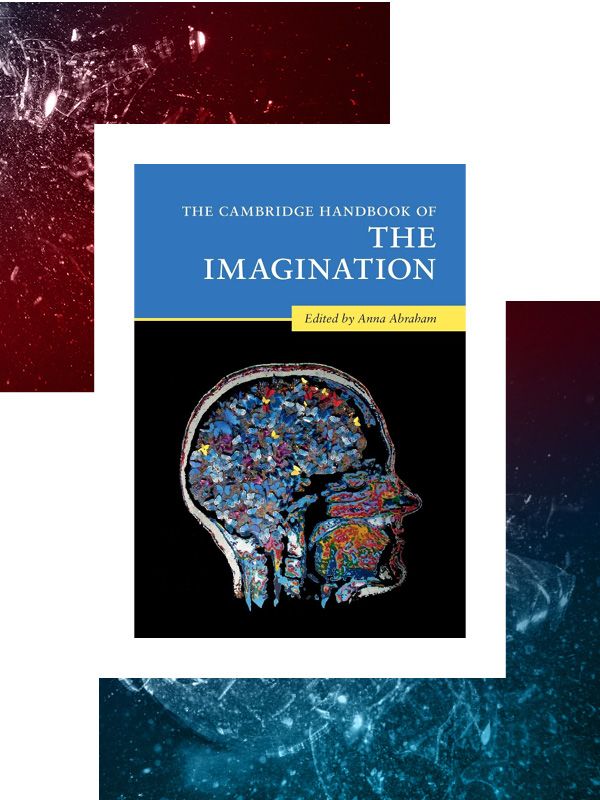
Abraham’s edited book, “The Cambridge Handbook of the Imagination,” was published earlier this year and is the first handbook of its kind to showcase multidisciplinary views on the human imagination. Comprised of 48 chapters, Abraham invited scholars from a range of disciplines, including anthropology, archaeology, medicine, neuroscience, psychology, philosophy, and the arts, to explain how they view the imagination.
“I was always frustrated by the way the word ‘imagination’ was used in the literature because everyone uses it in their own idiosyncratic ways,” says Abraham. “And I thought, I need to showcase how this word and the concepts tied to it are being used in different ways. I wanted to get us all into a common space that enables us to acknowledge and be mindful of differences in our conceptualizations of the imagination and work out ways to develop better and more representative frameworks that truly reflect the phenomenon. I don't want to dictate what something is. What I definitely want is to understand it. And this handbook project has definitely helped me understand the imagination better.”
A public affair
In addition to offering teacher training and a variety of educational programs for students, Abraham plans on expanding the Torrance Center’s presence in the Athens community. As the center’s director, she is interested in developing a cultural festival of the imagination where local museums, theaters, restaurants, artists, and academics can come together and discuss any topic or issue that relates to the imagination, creativity, and innovation.
By connecting with people of all ages in the community, Abraham hopes to inform the public on the center’s work and programs, reach out to partners engaged in creativity-based work, and expand her own research.
“If and when such a festival will take place, my vision is that the event will take place regularly and enable people in the community to have a fun and inspiring time,” she says. “Hopefully, we can use the occasion as a strategy for community building and public engagement by reaching out to relevant partners and interested parties. I want to know what the community needs in terms of creativity, as well as talent-oriented outreach, and where we can play a role.”
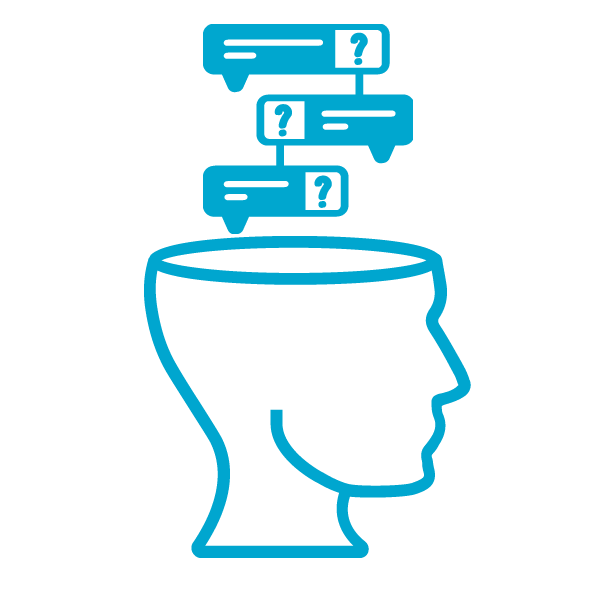
Connecting with Communities
Richard Blissett studies education policymaking to encourage productive, healthy, and justice-oriented conversations
By Lauren Leathers
While working in K-12 schools in Baltimore, Maryland, Richard Blissett often questioned the way policy decisions were made by city leaders, policymakers, and community members. As a graduate student at Vanderbilt University, he sought answers.
Today, Blissett researches and teaches education policy as an assistant professor in the Mary Frances Early College of Education’s Department of Lifelong Education, Administration, and Policy. In this field, he studies people’s attitudes and behaviors in the creation of educational policies to create productive, healthy, and justice-oriented conversations.
“I was never fully sure how to take the diverse perspectives people had and put them together in a way that helps kids,” says Blissett. “I want to figure out how to do this better. Not the teaching, but the decision making about education.”
Blissett’s research focuses on information, values, and attitudes; democratic structures in education governance (particularly school boards); and advocacy and social movements in education policy.
“The department offered the opportunity to support my teaching research in diverse ways, with more of a focus on justice work,” he says. “Also, I’ve been up and down the East Coast and forgot what I missed most about the South: how friendly people are and Blue Bell ice cream.”
What Blissett enjoys most about his work is connecting with local communities. He hopes to partner with Georgia schools to better understand community needs and local policymaking processes. The College offers him a strong platform to provide this service to schools, while simultaneously conducting robust research in the fields of education policy and justice.
“I think we all want our research to mean something,” he says. “I find, being in an applied field, that by maintaining connections with people doing the work on the ground, I’m better able to contextualize my work and hold myself accountable to centering the issues people are facing now.”
Step one, he says, is taking the time to listen and learn.
Blissett applies these techniques of learning and listening to his research on social movements at college campuses. Over the last year, he examined student-led protests and education to better understand what students are protesting for.
He found that student protesters seek responsible and responsive leadership and both individual‐oriented actions, like faculty and staff training, and institutional‐level actions, like policy changes, to address diversity, inclusion, and justice on campus.
“I think a core missing piece to the way institutions are thinking about the path forward in diversity, inclusion, and justice is that the dialogue is omitting questions about why institutions are not already doing better than they are,” he says. “When we see calls for new action now in this cultural moment—but balance them against similar actions that have been demanded in the past—it raises the question of whether the structures or people that stopped us from doing the right thing in the past persist.”
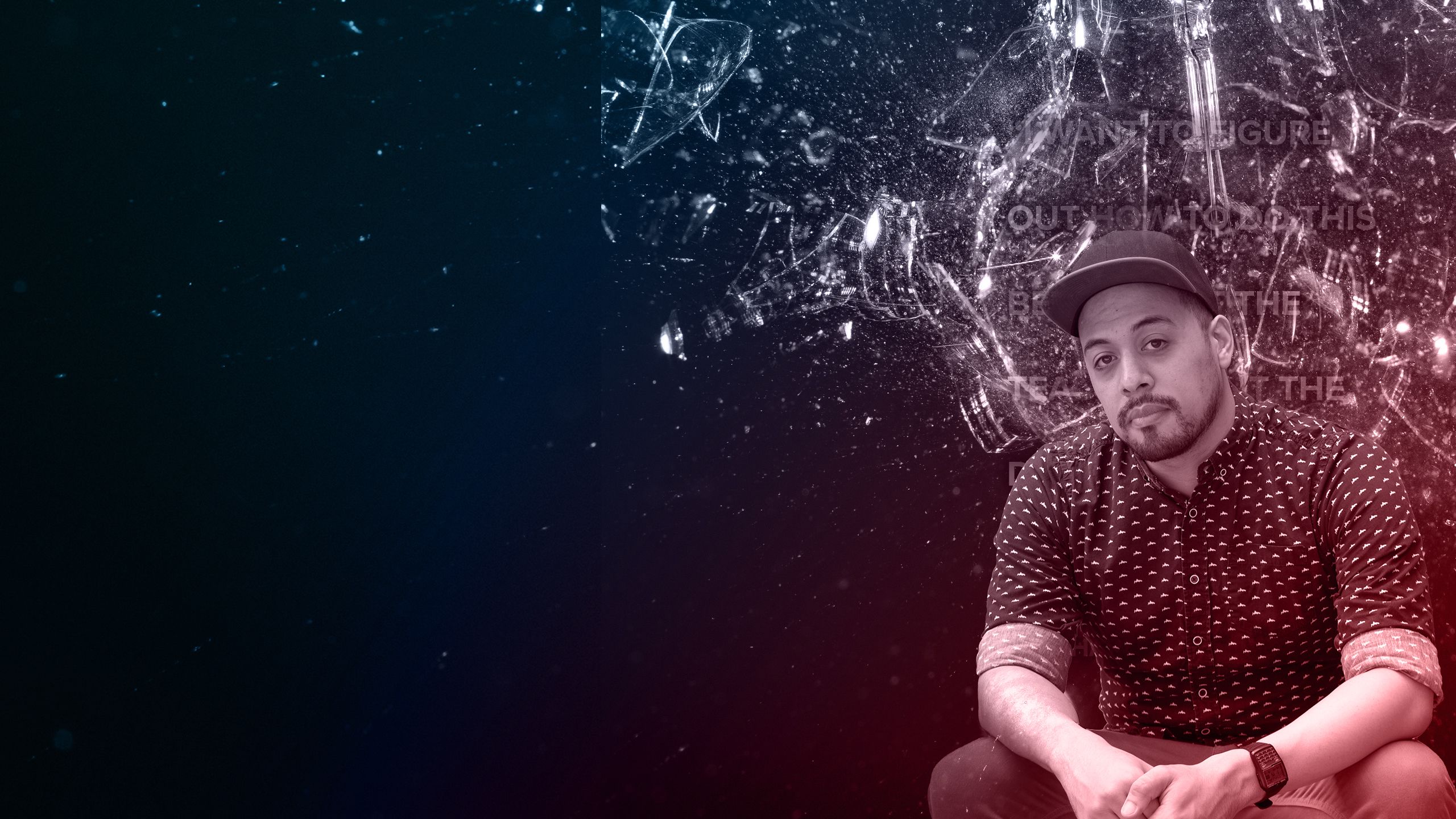
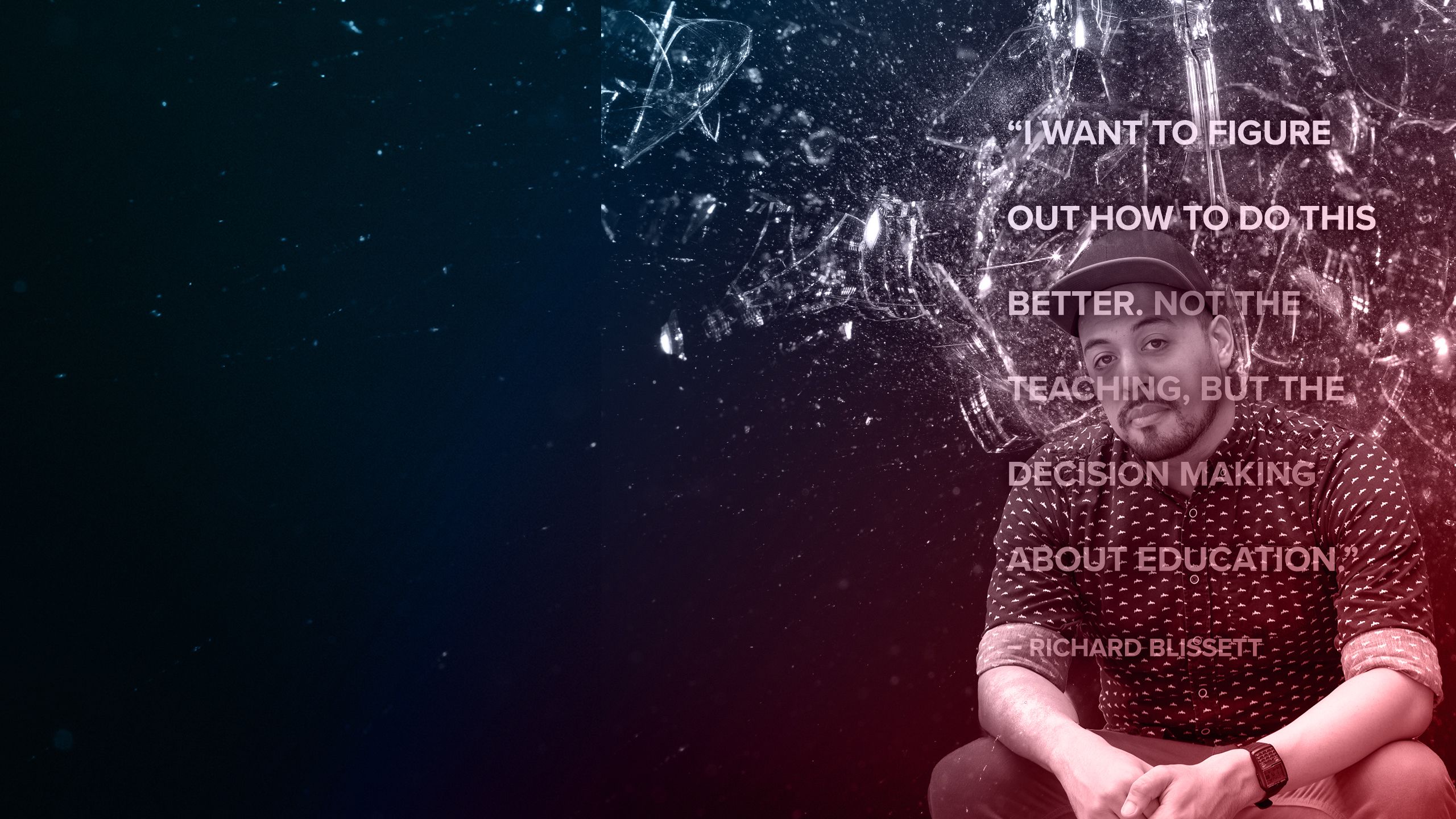
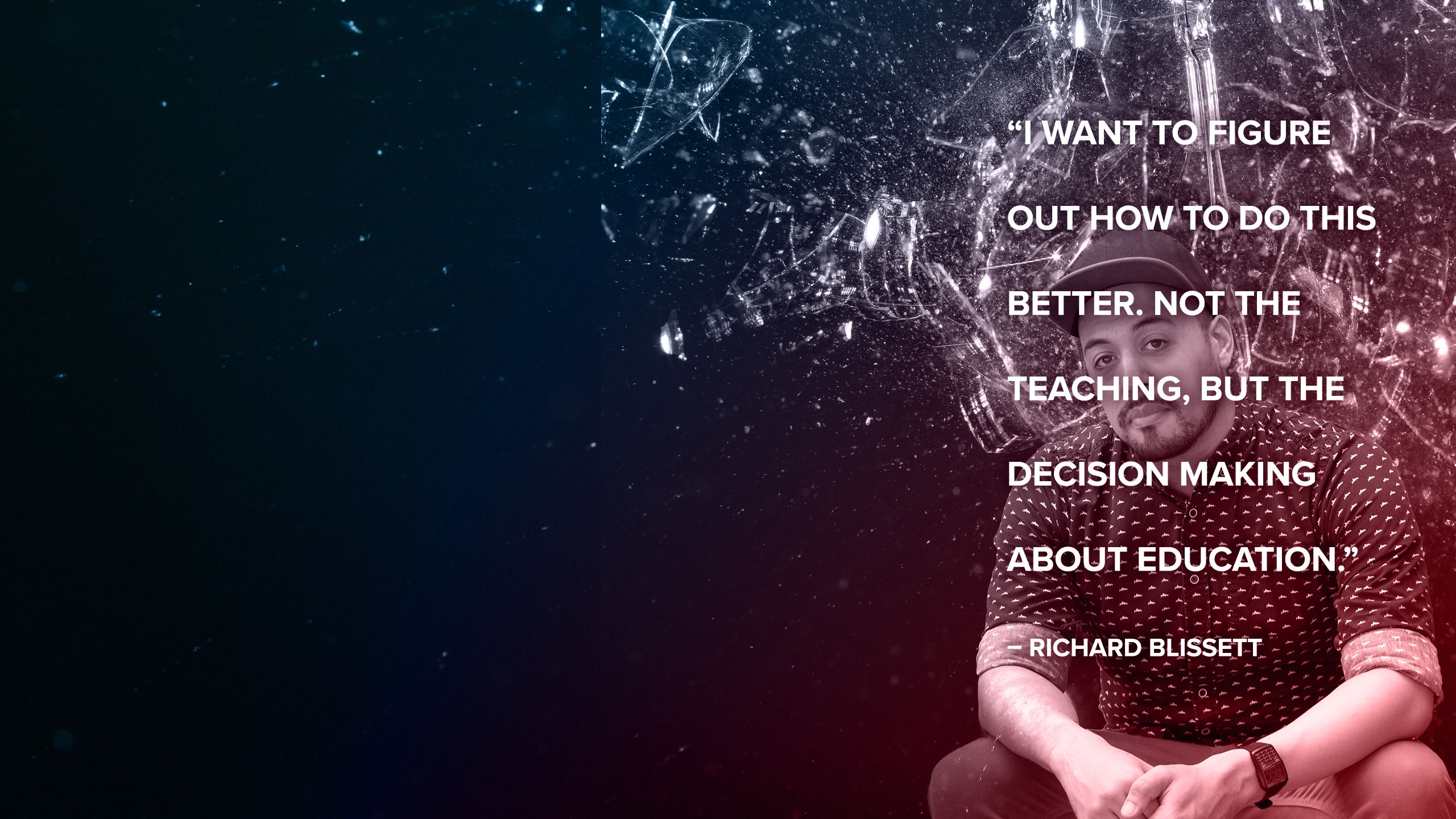
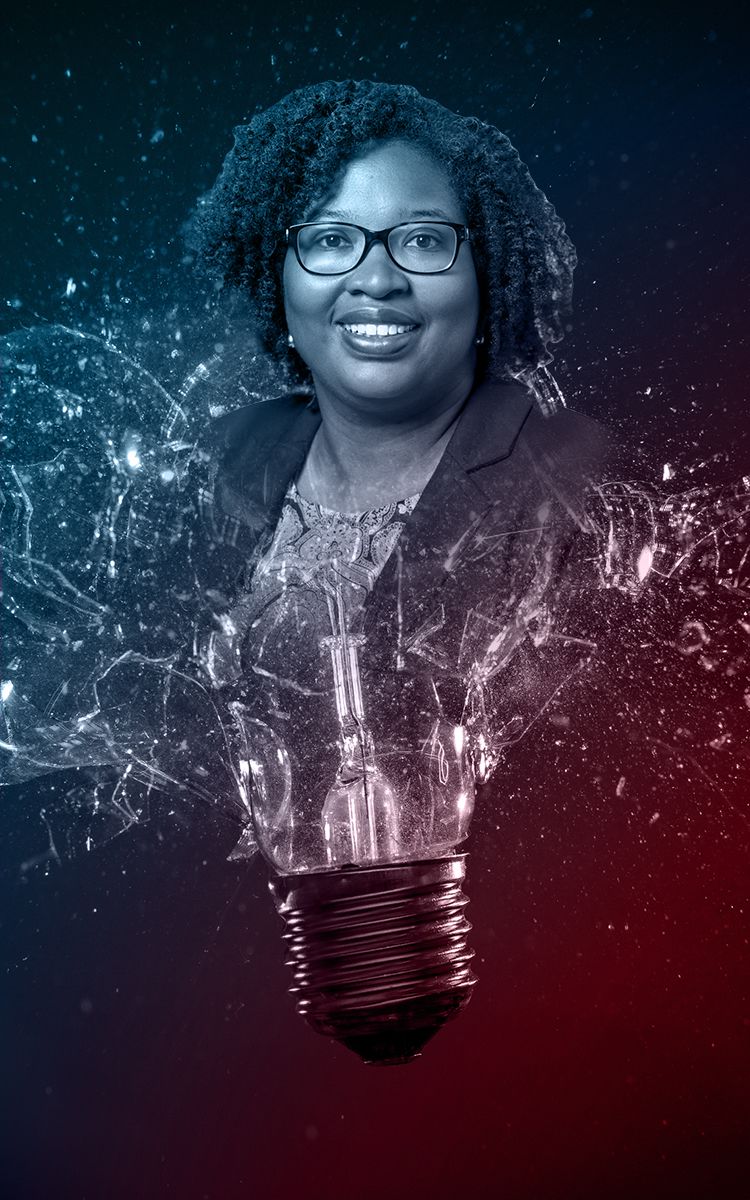
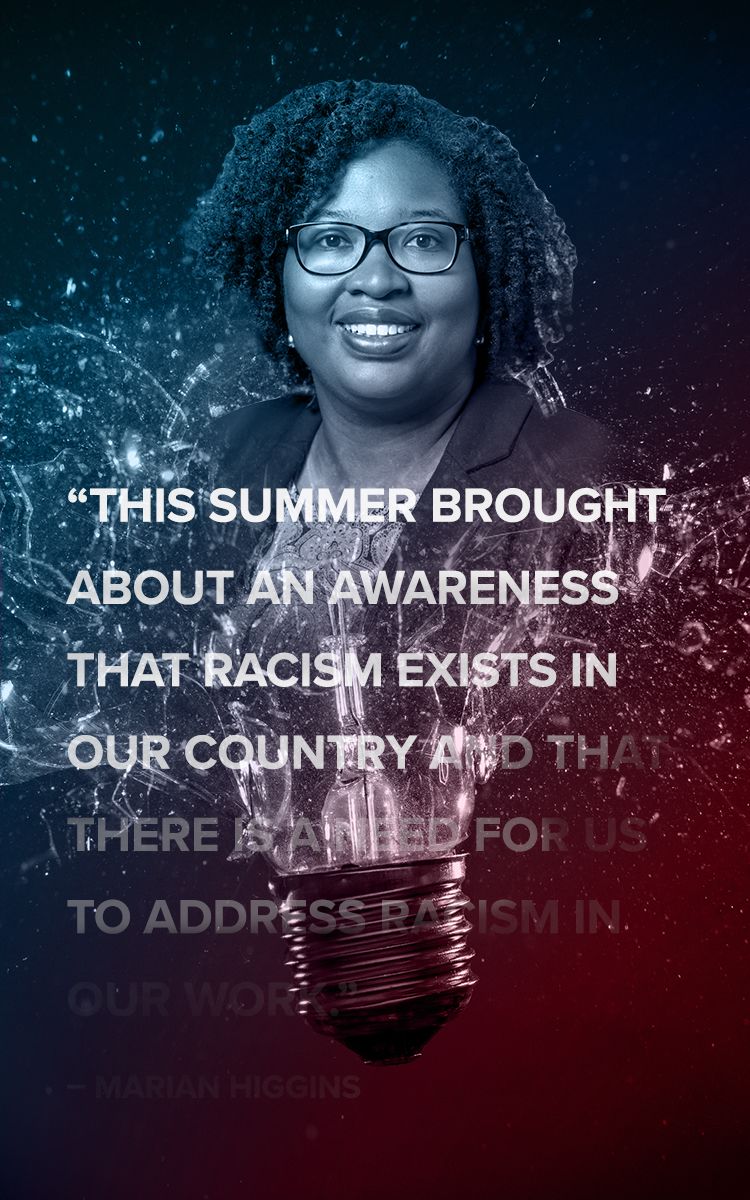
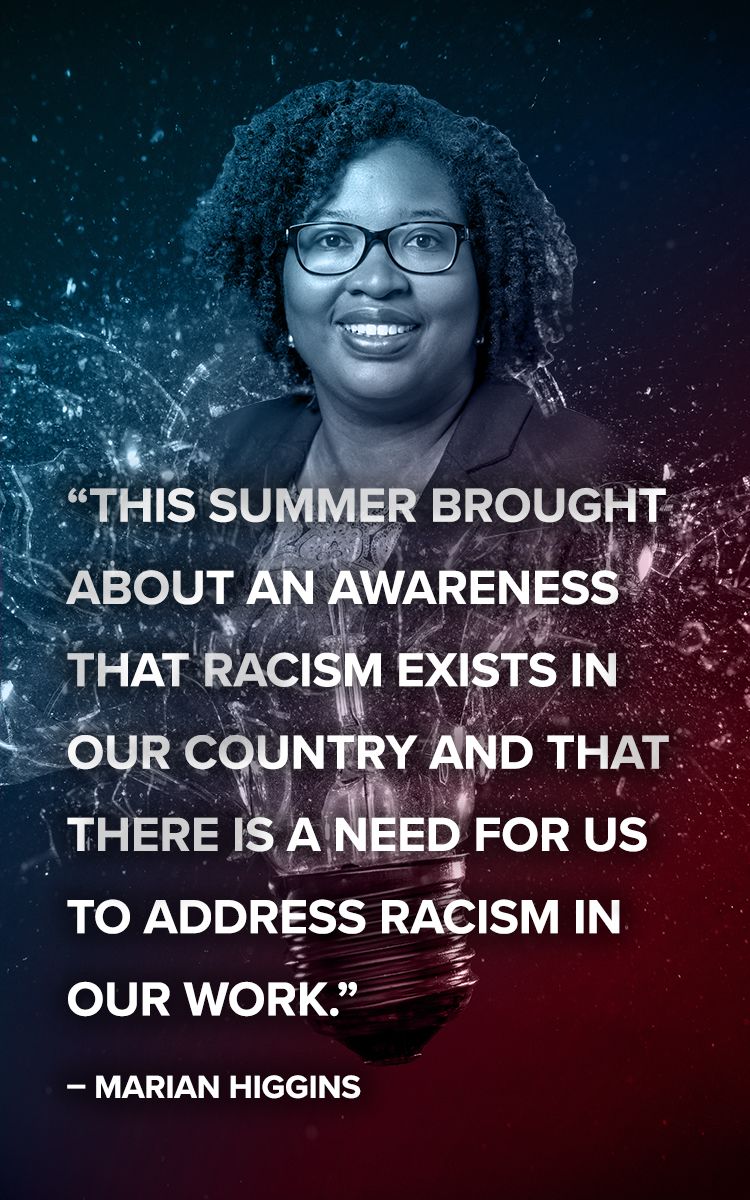
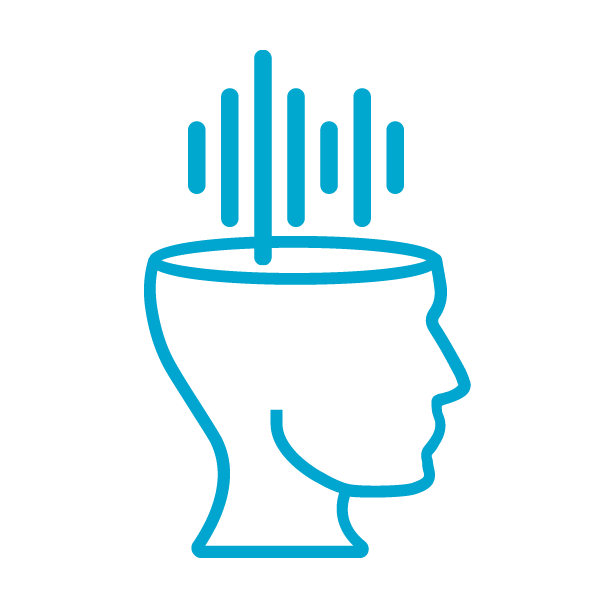
Clear Communication
Marian Higgins plans to address a range of social justice issues as interim associate dean for diversity, equity, and inclusion
By Lauren Leathers
Marian Higgins wants to listen to what you have to say.
Whether she’s in a conversation with students, staff, faculty, or members of the community, Higgins (Ph.D. ’11) is always interested in getting to the heart of the matter.
“People just want to be heard,” she says. “What is it that they want to happen? Simply listening helps people feel like someone seeks to understand.”
As the interim associate dean for the Office of Diversity, Equity, and Inclusion in the UGA Mary Frances Early College of Education, Higgins plans to address anti-racism, establish and maintain partnerships across campus and the community, and continue informing the College and community of current multicultural and social justice issues at the annual Diversity, Equity, and Inclusion Conference.
Higgins, a clinical assistant professor in the Department of Counseling and Human Development Services, has worked in higher education for more than 20 years. Her expertise covers a range of topics, including diversity, equity, and inclusion in the workplace; career development of college students; staff development and training; counseling; and supervision.
She discovered the value of career development while working at UGA’s Career Center, where she held three positions—career consultant, associate director of diversity programs, and director of career development and programs. For more than 12 years, she led diversity initiatives that focused on the needs of marginalized students and how to best serve them.
“I bring my career counseling lens to the work I do now,” she says. “I'm continuing to look at diversity, equity, and inclusion issues as it relates to career counseling or marginalized individuals.”
In her experience, the work of scholars and practitioners directly impacts the community in which they work. Because of this, she teaches students in the College about the effects they have on others. Additionally, she is identifying the needs of the College with respect to the pandemic and the current social justice movement in the U.S.
“This summer brought about an awareness that racism exists in our country and that there is a need for us to address racism in our work,” she says. “We’re thinking about ways we can do that as a College, meaning that as faculty, staff, and students, how can we come together? But also, how can we come together and support people of color whether it's in the College or the community?”
Higgins is the owner of Be Inspired Counseling and Consulting, LLC, a personal and professional development company focused on educating, inspiring, and equipping professionals to achieve success in the workplace. Launched in 2014, the company helps professionals grow by providing consultations, workshops, and trainings on career management and equity and inclusion in the workplace.
In January, Higgins launched “Dive-In,” a podcast focused on diversity, equity, and inclusion as it relates to career development. Each episode features scholars who discuss a range of topics, such as women and work, healing from racial trauma, rural students and career decisions, as well as what strategies career development professionals can use to meet the needs of all students and clients.
“My podcast originated from me wanting to continue to share information about my work in career services,” she says. “I want to share what I have learned through my experiences. I also want to bring attention to the experiences of people who we may not often hear about and make this information accessible.”
